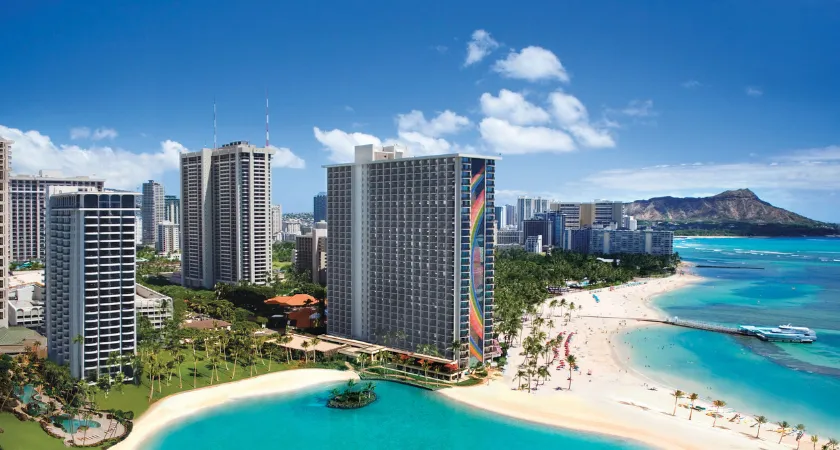
The Hilton Hawaiian Village Waikiki Beach Resort has reached a major sustainability milestone as its iconic Tapa Tower has officially been awarded LEED Certification, making it the first LEED-certified tower within the Park Hotels & Resorts portfolio. LEED, developed by the U.S. Green Building Council (USGBC), is recognized worldwide as the most widely used green building rating system and a symbol of excellence in sustainable design, construction, and operation.

The certification comes after a comprehensive renovation of the Tapa Tower, which prioritized environmentally conscious practices across energy use, water conservation, indoor air quality, and materials selection. According to project data, the upgrades led to a 14% reduction in energy consumption and greenhouse gas emissions.
“We see the achievement of this LEED certification as another way we get to take care of this place we call home,” said Debi Bishop, managing director of Hilton Hawaiian Village. “This is a proud milestone that reflects our commitment to sustainability and our belief that preserving Hawaii’s natural beauty is essential for today’s guests, our community, and future generations.”
Key improvements included:
One of the most significant challenges was certifying an existing building rather than new construction. Retrofitting the Tapa Tower required technical innovation and careful planning to ensure compliance with LEED standards while keeping the resort’s daily operations running smoothly.

“Sustainable upgrades in existing buildings are inherently more challenging,” said Torsten Biernat, director of sustainability at Baumann Consulting, the firm that guided the certification process. “Our role was to identify pathways to LEED credits while maintaining the integrity and operations of the hotel. This achievement demonstrates what’s possible when sustainability is fully integrated into a building’s renovation and operations planning.”
The Tapa Tower’s transformation highlights Hilton’s broader corporate sustainability strategy, known as “Travel with Purpose,” which focuses on reducing environmental impact while delivering positive social outcomes. The certification also sets a precedent within Park Hotels & Resorts, establishing a benchmark for future property upgrades across its global portfolio.
By revitalizing rather than replacing the building, Hilton Hawaiian Village has reinforced the value of adaptive reuse—a growing trend in the hospitality and construction industries that reduces waste, limits resource use, and preserves cultural landmarks while preparing properties for future generations of travelers.
For Hilton, the milestone is not only about energy efficiency but also about demonstrating leadership in Hawaii’s transition toward a greener economy. As more travelers seek eco-conscious accommodations, the Tapa Tower’s LEED certification positions the resort as a leader in sustainable tourism in the Pacific.
Originally reported by Business Wire.